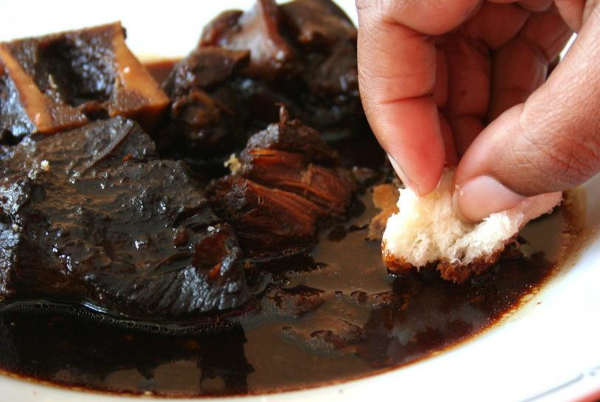It’s hard not to be overwhelmed by the barrage of brutality. How many times in recent days have I felt my stomach churn because of the news bombarding us?
Rage is roaring through our space, so unfettered that we can’t help but feel that, here and now, all fall down.
Sadly, the roots go far back and deep down, wrought by the multitude of histories that accompany us in our shadowed moments. Trauma, trauma, everywhere, at every level; scratch any surface and you’re bound to come up with horror stories, sometimes blocked out and buried, sometimes foaming at the mouth.

(Copyright Buzz-Caribbean)
In one form or another, we’ve come from a culture of violence.
One aspect, derived from the concept of corporal punishment, has been a perpetual sidebar to humankind’s existence. Some time ago, writing about the death penalty, I wrote this:
‘This planet has practised retributive measures of punishment forever. Some of the sadistic methods suggest the punishers were themselves quite deranged.
‘People were burnt and boiled, buried alive or buried with their heads exposed for animals to feast on them, lynched, quartered, thrown to lions, hunted by dogs, crucified, crushed, decapitated, dismembered, drowned, stoned—all in the name of laws.’
I can’t help but recall that now.

The very idea of corporal punishment is based on inflicting physical harm on others. It has been savagely and routinely employed in schools, homes, and the penal system. Flogging, whipping, caning, these brutal ‘strokes’ were activities that accompanied visits to headmasters’ dens.
Teachers were often vigorous enforcers of ‘disciplinary’ measures as well. Parents and guardians used whatever implements were close at hand; licks flowed out of anger, and no restraint was necessary. The cat o’ nine tails, described as a piece of plaited rope with nine thongs designed to lacerate the skin, was commonly used in prisons all over the world.
Violence came from all the places supposed to protect and nurture; churches were insidious spaces of sexual abuse. Nowhere was sacrosanct. Worse, it was entrenched and routine, institutionalised and sanctified as the path to morality.
Beat them into submission. And the righteous did conform.
When my daughter was a student at Specialist Learning Centre perhaps around 2001, the school sent out a circular to parents asking if they gave their consent to corporal punishment. I responded that I certainly did not consent and, further, I found it very disturbing that the school could not come up with other disciplinary measures.

About a year later, as I did the evening pick-up, her classmates came streaming out to inform me that the teacher had pelted her with a blackboard duster and had hit her repeatedly (six slaps, one said) for not paying attention. That was the end of that. I would like to think that the school has evolved since.
At home, we had come up with house rules, nothing onerous or rigid; the point was simply to establish agreed codes of conduct. I encouraged her to devise the penalties for infringements. That was very entertaining for me. She was a very hard taskmaster.
I remember once asking her how come she was not watching Samurai X, one of her favourite TV shows, and she calmly replied that she had been banned from it for two weeks. I had forgotten about it, but she was diligently enforcing the punishment she had come up with.
There are many ways to teach about consequences. It seems to me that, by engaging children in such discussions, they can be made to understand more about our responsibilities as humans living within a society.

The problem is that generations have grown up under the tyranny of the rod, have learned to attribute their ‘success’ to the number of times their parents straightened them out with a good beating. Look at me, they say, I come out good.
If you hold that to be true, why would you bother to think about passing on a different way of learning?
People say that the reason there is so much violence in the schools is that corporal punishment is no longer permitted in schools. We’ve imbibed the idea that physically hurting someone is an effective way to impart disciplinary measures when all it does is teach that violence is a solution.
Violence—physical, mental, emotional, sexual—is destructive to every element of what we call our humanity. It disfigures us, leaving lifetime scars that can rupture at the slightest trigger. Children, unleashed into a school system that is woefully unprepared to nurture them, carry the residual stains of months and months in confined lockdown spaces that have been contaminated by frustration, rage and dysfunction.
Do we know what they have had to endure within the walls of their homes? Can we imagine how common abusive environments are?

You come to school with your ears ringing, your stomach growling, your rage festering and even a hard breeze could topple you into a murderous frenzy.
As appalling as it has been to see what’s happening in the schools, we have to step back and examine the nature of the environments we have provided for our children.
We’ve failed them.
The national scandal regarding abuse in children’s homes is not new. We think it is only now coming to light but we must know that too many people knew and did nothing, said nothing. It boggles the mind to imagine such criminal negligence. A shame and a disgrace.
 Wired868 Wired868 for smart sport news and opinion
Wired868 Wired868 for smart sport news and opinion








? ???????? ??? ????????…the efficacy, efficiency and economy of it…is what allowed humans to become the apex predator on the planet.
This modern idea of violence-free life has never existed in our recorded history.
At every epoch of human history, we saw that the highest iteration of life and culture revolved around masculine violence enshrined in a shroud of ritual and ceremony.
If your male child was not good at violence, your family died and your fortune was lost.
The church promoted violence. the lords of empire promoted violence.
This idea that humans have somehow sidestepped violence as a way of life is to ignore everything that is going on around us and to ignore the very history of our species.
Think of it like this: ????? ??? ???? ????? ??? ??’?? ?????? ???? ??????? ??? ??? ?????, when we re-emerge into that new world, who do you want on your team?
A blogger? Miss Henderson from Second Year Infants? Fr McCarty from Lady of the Well Episcopal?
Or that guy who can zop the eye of a gnat with a pickaxe at 30 strides?